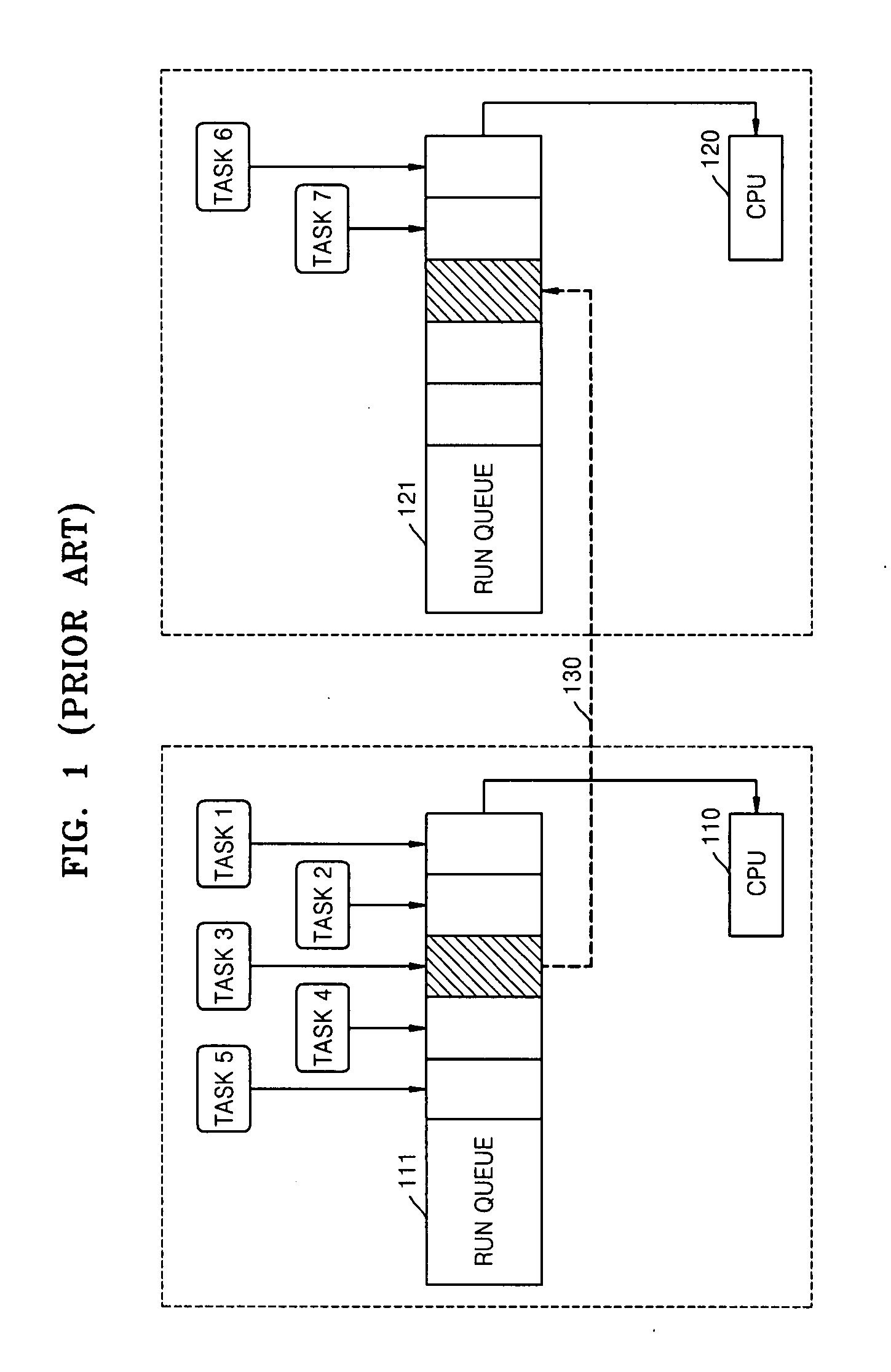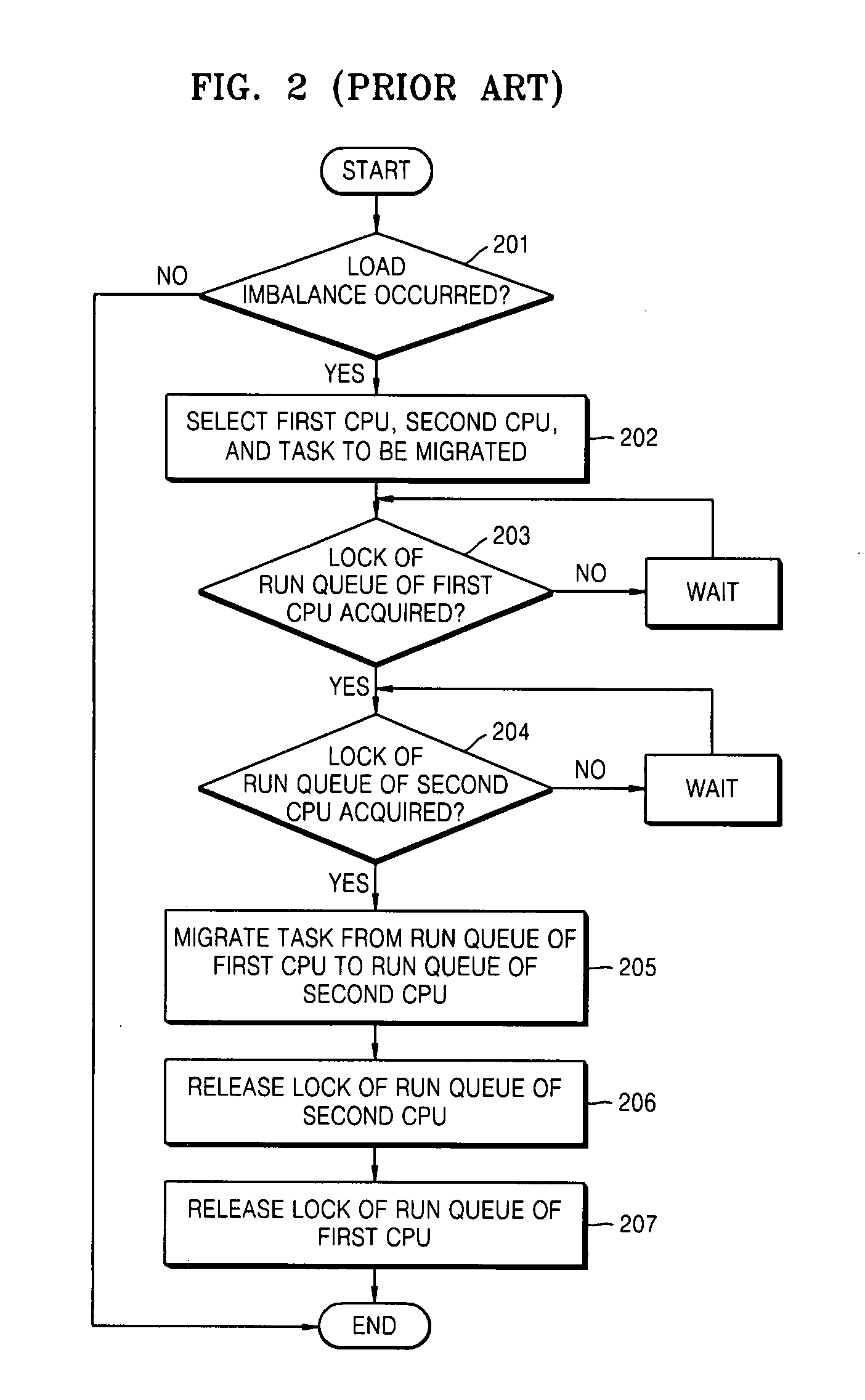Load balancing method and apparatus in symmetric multi-processor system
- Summary
- Abstract
- Description
- Claims
- Application Information
AI Technical Summary
Benefits of technology
Problems solved by technology
Method used
Image
Examples
Embodiment Construction
[0027]Hereinafter, the present invention will be described more fully with reference to the accompanying drawings, in which exemplary embodiments of the invention are shown.
[0028]FIG. 5 is a diagram illustrating a symmetric multi-processor system according to an embodiment of the present invention.
[0029]Referring to FIG. 5, the symmetric multi-processor system according to the current embodiment of the present invention includes a multi-processor 510, a memory 520, a scheduler 530, and a bus 540. The symmetric multi-processor system illustrated in FIG. 5 is the simplest drawing for describing the current embodiment, and it will be obvious to one of ordinary skill in the art that other elements can be included, such as a disc device and input / output device. Also, FIG. 5 is a conceptual diagram illustrating the elements according to their functions, and thus may differ from a physical hardware configuration.
[0030]The multi-processor 510 includes a plurality of central processing units...
PUM
 Login to View More
Login to View More Abstract
Description
Claims
Application Information
 Login to View More
Login to View More - R&D
- Intellectual Property
- Life Sciences
- Materials
- Tech Scout
- Unparalleled Data Quality
- Higher Quality Content
- 60% Fewer Hallucinations
Browse by: Latest US Patents, China's latest patents, Technical Efficacy Thesaurus, Application Domain, Technology Topic, Popular Technical Reports.
© 2025 PatSnap. All rights reserved.Legal|Privacy policy|Modern Slavery Act Transparency Statement|Sitemap|About US| Contact US: help@patsnap.com



